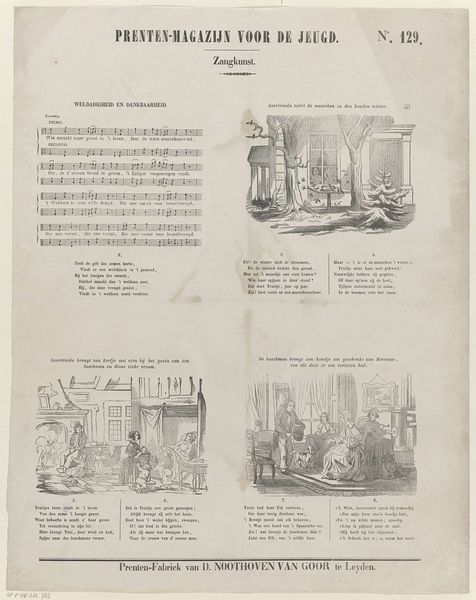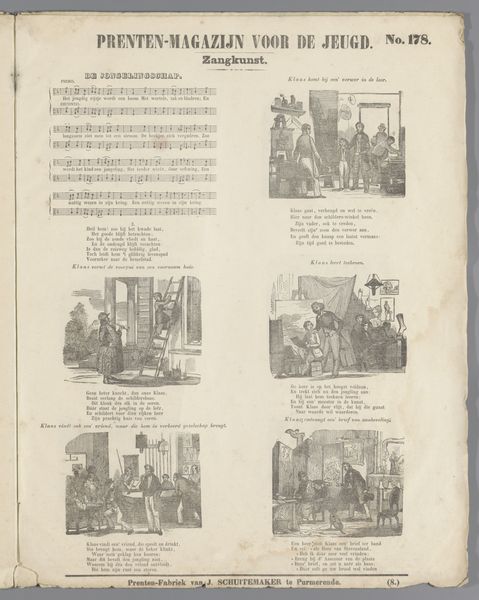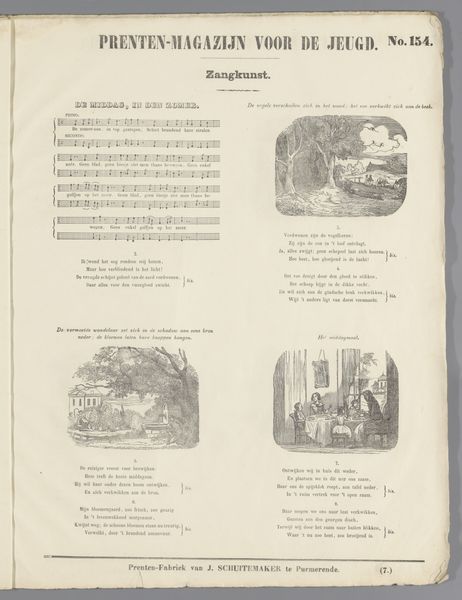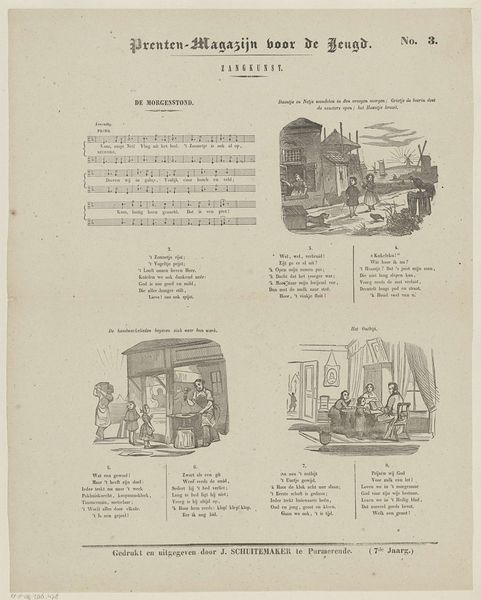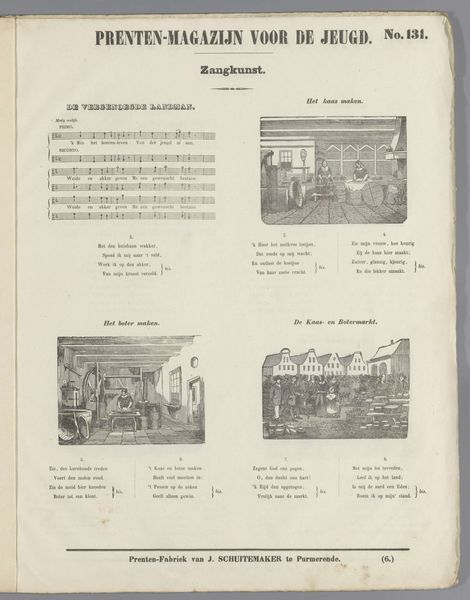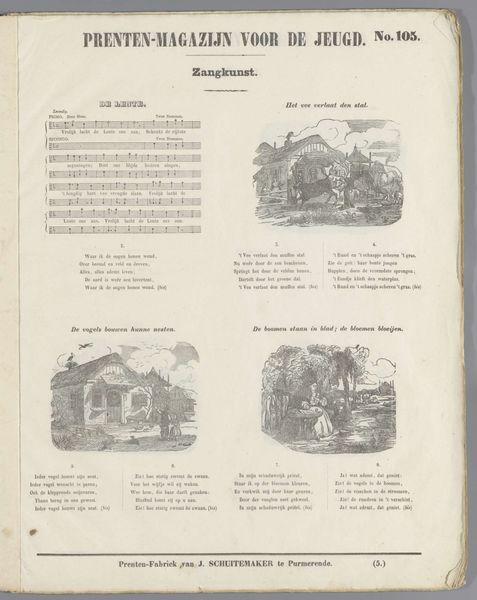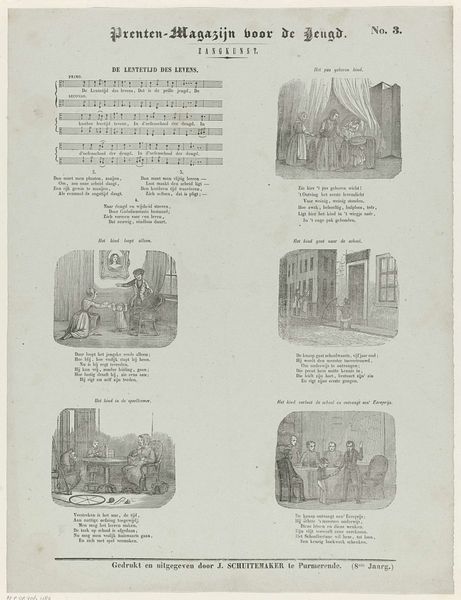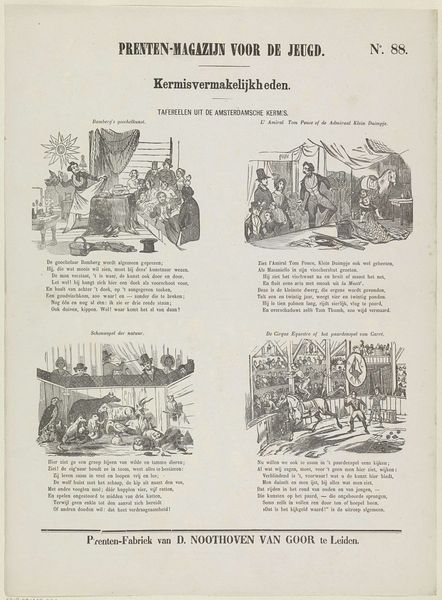
Dimensions: height 410 mm, width 326 mm
Copyright: Rijks Museum: Open Domain
Curator: Oh, my! A quaint domestic scene unfolds before us. The level of detail is so fine, almost like a miniature world etched onto paper. Editor: Precisely! We're looking at a print titled "Prenten-magazijn voor de jeugd / Zangkunst," which translates to "Print Magazine for Youth / Vocal Art," created in 1853 by Jan Schuitemaker. The style is very much entrenched in the romanticism period. There’s almost a storybook aesthetic in its design, specifically due to the presence of the musical lyrics. Curator: Storybook indeed! The image clusters portray little dramas, snapshots of what I presume are cozy familial interactions and maybe even neighborhood tales! Is that sheet music at the top left? Editor: Yes, each panel seems to visually correspond with the verses of the song provided, which likely adds depth and a guiding narrative for children interacting with it. It serves as a form of edutainment with didactic imagery aimed to communicate the moral and cultural values deemed desirable at that time. It is so reminiscent of conduct books during this period. Curator: It gives me such a strong feeling of warmth—a strange sensation from just looking at a collection of small engravings. It also provides context to those times: look at the family scenes with women attending to daily tasks like looking after kids, all in a domestic sphere... I see narratives about family and connection woven into daily life, almost too idyllic perhaps. Editor: Yes, the idealized presentation of domesticity speaks to a wider commentary on gender roles in the 19th century. In the scenes that depict children engaging in acts of care for animals or displaying domestic behavior such as being visited by a family doctor or receiving communion, it serves as more than just moral messaging. Instead, these illustrations help propagate social roles and expectations onto the developing minds of these young children, setting cultural precedents that in effect prepare children to be subservient to hegemonic norms of family life at the time. Curator: It makes you wonder, doesn't it, about all those messages embedded, all those gentle "shoulds" and "oughts". Still, there’s such skill, a beauty even, in the lines of each drawing, such grace. Editor: It invites contemplation on the narratives that visuals can convey. Thanks to art, a child's playful songbook takes on layered implications—and in considering them, we broaden our insight of both past and present dynamics.
Comments
No comments
Be the first to comment and join the conversation on the ultimate creative platform.
